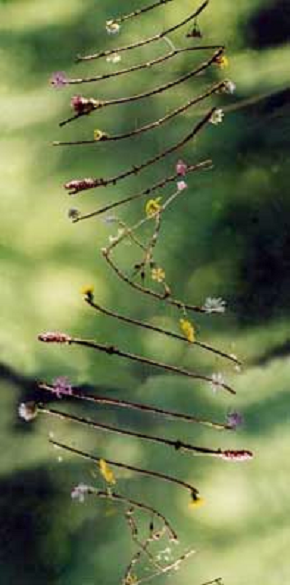‘Making room for poetry and curiosity on a daily basis’
‘All artists are resident aliens’ states Irish poet Eamon Grennan. This was a comment I recently came across and I thought a fitting start to explain my presence as an artist in the Zoology Department.
You may be surprised to learn that there is a small but growing interest in science for some contemporary artists. Why is this? Well, from an artists’ perspective, it seems important to engage with science and technology, since science occupies a powerful role in how we understand ourselves and how we relate to our environment. Artists have often translated, reflected and questioned the new in society. In recent years we can find artists that have sought to collaborate with scientists, not so much in Ireland but overseas, the Wellcome Trust, and other international organisations have in the last decade funded artists from all fields: visual artists, musicians, poets, actors and film makers, to engage with science. There appears to be a growing belief that artists can engage the public in science in a manner that is not currently available to scientists.
While not supporting specific art science projects, the Irish Arts Council through residencies and projects allows artists an uninterrupted period in which to research ideas for a new body of work.

detail: unwanted genes on a DNA spiral (2003)
In my case, a joint application with Dr Paula Murphy, received an unusual Arts Council residency award to undertake an art project in the Zoology Department for 3 months, September – December 2004. My main reason for working in the Zoology Department is a strong interest in biology. Having worked in biological research for many years before attending Art College, ideas and questions about science drive the content of my art projects. I also feel the importance of gaining first hand knowledge from scientists rather than relying on popular (and often sensationalist) media.
My initial contact with the Zoology Department was sitting in on Dr. Murphy’s 4th year developmental biology tutorial class in 2003. These tutorials involve students examining recent research papers, which gives an exciting context for the student’s developmental biology knowledge. At the same time, students are expected to debate and think of the wider issues and misconceptions surrounding the field. We looked at transgenic animals as tools for research, cloning and stem cell research etc.
During the residency I designed a project that asked staff and final year students for an image that was important to their work and a short description of why they chose it. Responses ranged from photographs, drawings, and diagrams created or selected by the scientists and students (one adventurous staff member even had me create a temporary tattoo of their image on their back!). Interestingly, while their comments alongside the images provided ideas about why the image was important to them, it also created a means to identify the person behind the science. In so doing, a visual, subjective and often very creative ‘conversation’ of the work undertaken by the Zoology Department took place; personal snapshots of what makes up this truly fascinating department. The project also introduced ideas for recognising the potential to communicate in new ways, creating an opportunity to those in science to value ‘the poetic and the curious’ in their daily work.
The work produced during the residency is on display in the Zoology Department. However, the real aim is to exhibit, the work more widely, thereby connecting and engaging a wider audience. The work was displayed during the British Association Festival of Science hosted in TCD in September 2005. There has also been much public media response, with interviews both on RTE Radio 1 and in the Irish Times. The residency will be the subject of an RTE radio documentary that will be broadcast on Lyric FM in December and on RTE radio 1 in 2006. I find that both the public and educators are fascinated with science but have limited avenues to approach science directly.
Finally, a big thank you to Dr Paula Murphy and the staff and students in the Zoology Department for making me feel welcome, putting up with a lot of questions while willingly trying their hands at art-making.
Catherine Fitzgerald, MA Fine Art

